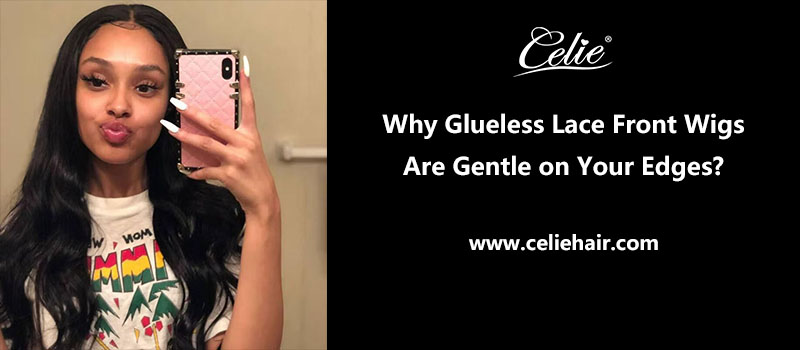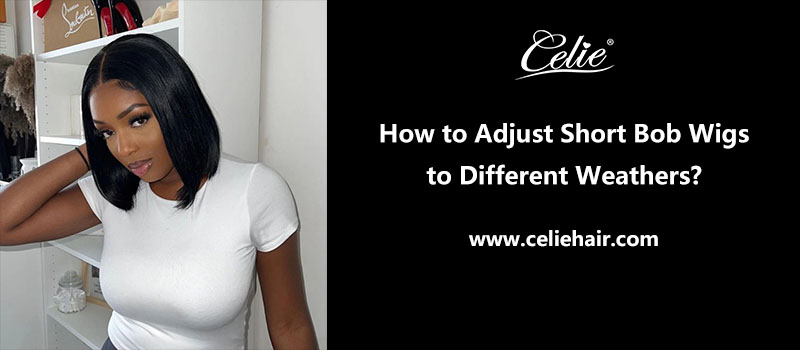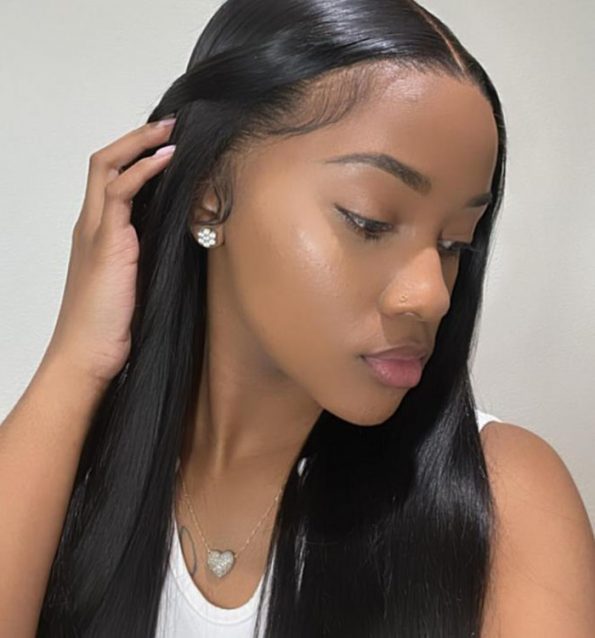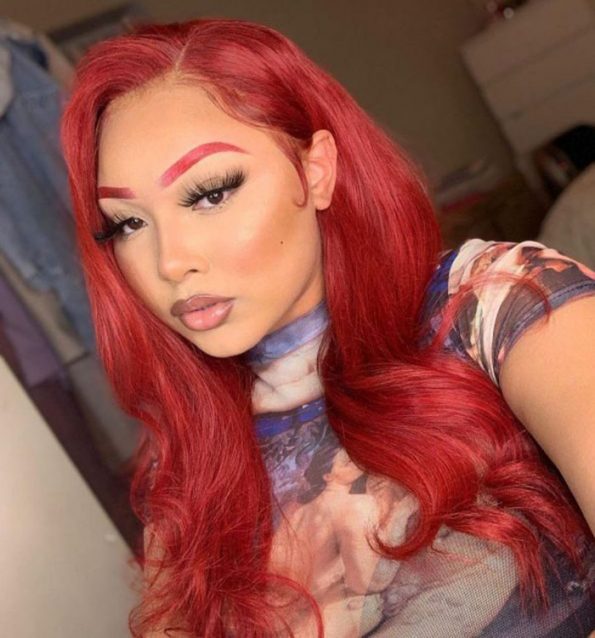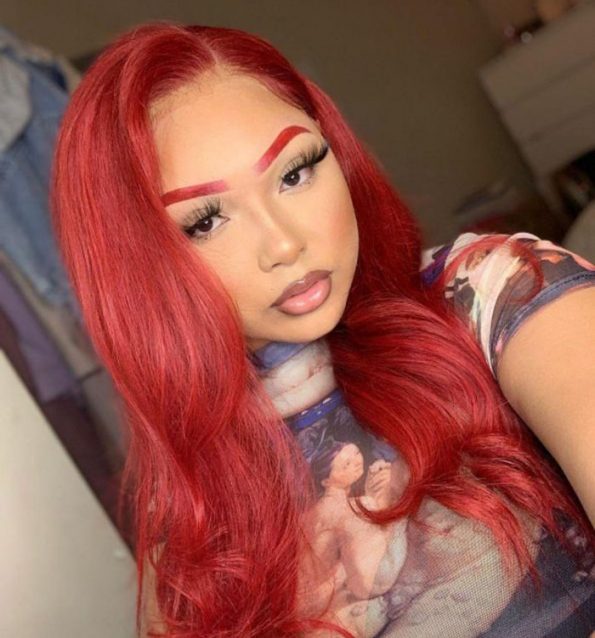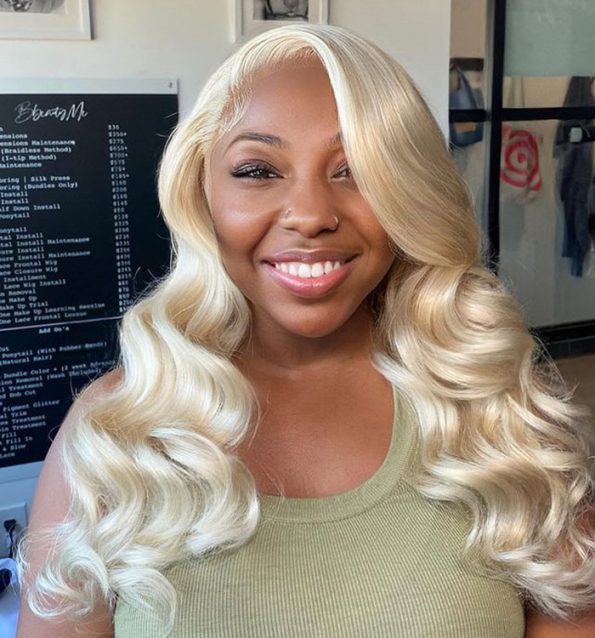Lace front wigs have become increasingly popular in the world of hair styling and fashion. These wigs provide a natural and versatile look, allowing individuals to change their hairstyles effortlessly. However, the traditional method of securing lace front wigs involves the use of adhesives, which can potentially damage the delicate hairline and edges. In recent years, a new alternative has emerged – glueless lace front wigs. These wigs offer a gentle and safe solution for those concerned about preserving their natural hairline and edges. In this article, we will explore the various reasons why glueless lace front wigs are gentle on your edges, providing you with both style and hairline health.

I. Know the Importance of Hairline and Edges:
Before delving into the benefits of glueless lace front wigs, it is essential to understand the significance of maintaining a healthy hairline and edges. The hairline frames our face and contributes to our overall appearance. Excessive tension, traction, or damage to the hairline can lead to hair loss, thinning, and receding edges. Therefore, it is crucial to choose hairstyling options that minimize stress and strain on this delicate area.
II. The Advantages of Glueless Lace Front Wigs:
No Adhesive-Related Damage:
Traditional lace front wigs require the use of adhesives or glues to secure the wig to the scalp. While these adhesives provide a secure hold, they can cause a range of issues such as skin irritation, allergic reactions, and even hair breakage when not applied or removed properly. Glueless lace front wigs eliminate the need for adhesives, reducing the risk of damage to the hairline and scalp.
Reduced Tension and Stress:
One of the primary reasons glueless lace front wigs are gentle on your edges is the absence of tension. Traditional wigs attached with glue or adhesive can create tension on the hairline, leading to traction alopecia. Glueless wigs, on the other hand, typically utilize adjustable straps and combs or clips, which distribute the weight of the wig evenly and minimize strain on the hairline.
Versatility and Easy Application:
Glueless lace front wigs are known for their versatility and ease of application. These wigs come with adjustable straps that allow for a customized fit, ensuring that the wig sits comfortably on the head without causing undue pressure on the edges. Additionally, the presence of combs or clips further enhances the wig’s stability while reducing the strain on the hairline.
Improved Air Circulation and Scalp Health:
Glueless lace front wigs promote better air circulation around the scalp compared to their glued counterparts. The absence of adhesive materials allows for better ventilation, reducing the chances of scalp irritation and itchiness. This enhanced airflow also promotes a healthier environment for the hair follicles, which can contribute to overall hair growth and maintenance.
Convenience and Removal:
Glueless lace front wigs offer a hassle-free experience when it comes to application and removal. Unlike glued wigs that require meticulous application and removal processes, glueless wigs can be worn and removed quickly and easily. This not only saves time but also eliminates the risk of accidentally pulling or damaging the hairline during wig removal.
III. Maintaining Hairline Health:
While glueless lace front wigs provide a gentler option for your edges, it is still essential to take certain precautions to maintain hairline health:
Proper Wig Installation:
Although glueless lace front wigs are generally gentle on the edges, it is crucial to ensure proper installation. Avoid pulling the wig too tight or positioning it too far back on the hairline, as this can lead to unnecessary tension. Following the manufacturer’s instructions and seeking professional assistance, if needed, can help you achieve a secure and comfortable fit.
Regular Hairline Care:
Even with a gentle wig option, it is crucial to maintain a regular hair care routine to keep your natural edges healthy. This includes gentle cleansing, moisturizing, and conditioning of the hairline and scalp. Additionally, practicing protective styling and avoiding excessive manipulation can help prevent further damage or thinning.
Alternating Wig Styles:
While glueless lace front wigs are a great choice for preserving your edges, it is advisable to alternate between wig styles and give your hairline regular breaks. Allowing your natural hair to breathe and rejuvenate can minimize the risk of long-term damage and promote healthy hair growth.
IV. Exploring the Impact on Hairline Health:
Promoting Hairline Regrowth:
Q: Glueless lace front wigs can provide a protective barrier for the hairline, shielding it from environmental damage and excessive styling. This can create an optimal environment for regrowth and recovery for individuals experiencing hairline thinning or recession. How can glueless lace front wigs contribute to hairline regrowth? Are there any specific techniques or ingredients to look for in wigs that can aid in regrowth?
A: Glueless lace front wigs can promote hairline regrowth by minimizing tension and allowing the hairline to rest and recover. The absence of adhesives reduces the risk of further damage and breakage, allowing the hair follicles to strengthen and regrow. When choosing a wig for hairline regrowth, it’s essential to look for wigs made with breathable and lightweight materials such as human hair or high-quality synthetic fibers. These materials allow for better airflow and prevent the accumulation of sweat or oils that could potentially hinder regrowth. Additionally, wigs with a natural-looking hairline and a density that matches your natural hair can help create a seamless blend and minimize stress on the existing hairline.
Preventing Traction Alopecia:
Q: Traction alopecia is a type of hair loss caused by repetitive pulling or tension on the hairline. How do glueless lace front wigs help prevent traction alopecia? What are some other measures individuals can take to minimize tension on their hairline, especially if they frequently wear wigs or engage in tight hairstyles?
A: Glueless lace front wigs help prevent traction alopecia by distributing the weight of the wig evenly across the scalp. The adjustable straps, combs, or clips used to secure the wig offer a secure fit without exerting excessive tension on the hairline. By avoiding the use of adhesives, which can create additional pulling and strain, glueless wigs reduce the risk of traction alopecia. To further minimize tension on the hairline, individuals can consider wearing looser hairstyles or opting for protective styles that do not put excessive stress on the edges, such as braids or buns. Regularly giving the hairline breaks from wig wearing and massaging the scalp to stimulate blood flow can also help maintain a healthy hairline.
Impact on Hairline Elasticity:
Q: Repeated use of traditional glued lace front wigs can affect the elasticity of the hairline, leading to a weakened and fragile hairline. How does the use of glueless lace front wigs contribute to preserving hairline elasticity? Can regular use of glueless wigs help improve the overall health and strength of the hairline?
A: Glueless lace front wigs contribute to preserving hairline elasticity by avoiding the use of harsh adhesives that can damage the hairline over time. The absence of adhesives means that the hairline is not subjected to the pulling, stretching, and chemical exposure associated with glue application. Regular use of glueless wigs, when worn correctly and not overly tight, can help improve the overall health and strength of the hairline. By reducing tension and allowing the hairline to breathe, the hair follicles can function optimally, promoting better elasticity and resilience. However, it’s important to strike a balance and not rely solely on wig wearing, as maintaining a healthy hairline requires a holistic approach, including proper hair care, nutrition, and avoiding excessive manipulation or styling.
V. Comparing Glueless Lace Front Wigs with Other Wig Attachment Methods:
Glue vs. Glueless: Assessing the Pros and Cons:
Glueless lace front wigs and traditional glued lace front wigs offer different approaches to wig attachment. Understanding the pros and cons of each method can help individuals make an informed decision based on their specific needs and preferences.
a) Glueless Lace Front Wigs:
Pros:
Gentle on the hairline: Glueless wigs eliminate the need for adhesives, reducing the risk of tension, breakage, and damage to the hairline.
Comfortable fit: Glueless wigs utilize adjustable straps, combs, or clips for a secure and comfortable fit without putting excessive pressure on the scalp.
Versatile styling: Glueless wigs allow for various parting and styling options, providing versatility in creating different hairstyles.
Cons:
Limited longevity: Glueless wigs may require more frequent adjustments and maintenance compared to glued wigs to ensure a secure fit over time.
Less extreme styling options: Glueless wigs may not be suitable for styles that require a very tight or sleek appearance, as they offer a more natural and flexible fit.
b) Traditional Glued Lace Front Wigs:
Pros:
Long-lasting hold: Glued wigs provide a secure and long-lasting hold, even in extreme weather conditions or during high-intensity activities.
Precise and sleek appearance: Glued wigs offer the ability to create a seamless and precise hairline, achieving a sleek and polished look.
Cons:
Potential for hairline damage: The use of adhesives can lead to hairline damage, breakage, and sensitivity, particularly if not applied or removed properly.
Time-consuming application and removal: Applying and removing glue can be a time-consuming process that requires skill and careful handling.
Wig Caps and Wig Grip Bands:
Wig caps and wig grip bands are alternative methods of securing wigs without using adhesives. They offer different advantages and considerations compared to glueless lace front wigs.
a) Wig Caps:
Wig caps are stretchy caps that are worn underneath the wig to provide a foundation for attachment.
Pros:
Added comfort: Wig caps can provide a barrier between the scalp and the wig, reducing friction and increasing comfort.
Improved wig stability: Wig caps can help hold the wig in place and prevent slipping during wear.
Cons:
Potential for increased heat and sweat: The additional layer of a wig cap can contribute to a warmer and potentially more uncomfortable wearing experience, particularly in hot weather.
Limited hairline protection: Wig caps may not offer the same level of protection and gentleness to the hairline as glueless lace front wigs.
b) Wig Grip Bands:
Wig grip bands are adjustable elastic bands that are worn around the head to secure the wig in place.
Pros:
Enhanced stability: Wig grip bands provide a secure grip on the wig, minimizing movement and ensuring a snug fit.
Reduced tension on the hairline: By distributing the weight of the wig evenly across the head, wig grip bands help to minimize tension on the hairline.
Cons:
Potential for discomfort: Some individuals may find the pressure from the wig grip band uncomfortable or tight, particularly if worn for extended periods.
Limited versatility: Wig grip bands may not be suitable for all wig styles or individuals with specific scalp conditions or sensitivities.
Tape and Adhesive Alternatives:
In addition to glueless lace front wigs, there are various tapes and adhesive alternatives available for securing lace front wigs. These options offer unique benefits and considerations compared to both glueless and traditional glued wigs.
a) Double-Sided Tape:
Double-sided tape is applied to the perimeter of the wig and adheres to the scalp, providing a secure hold.
Pros:
Secure hold: Double-sided tape offers a strong and reliable hold, keeping the wig in place even during vigorous activities.
Flexibility in application: Different types of double-sided tapes are available, allowing individuals to choose the one that best suits their needs and preferences.
Cons:
Potential for residue and clean-up: Removing double-sided tape can leave residue on the scalp and the wig, requiring additional cleaning and maintenance.
Potential skin sensitivity: Some individuals may experience skin irritation or sensitivity from the adhesive in the tape.
b) Wig Adhesive Alternatives:
There are various adhesive alternatives, such as wig adhesives that are specifically formulated to be more gentle on the hairline.
Pros:
Secure hold with reduced potential for hairline damage: These adhesive alternatives provide a strong hold while minimizing the risk of hairline damage, breakage, or sensitivity.
Flexibility in usage: Different types of adhesive alternatives are available, offering individuals options based on their needs and preferences.
Cons:
Application and removal process: Adhesive alternatives may still require careful application and proper removal techniques to avoid any potential damage or discomfort.
Individual compatibility: Some individuals may still experience sensitivity or reactions to certain adhesive alternatives, so it’s important to test the product on a small area of the skin beforehand.
Glueless wigs that are hot on sell.
This wig is made from high-quality human hair and features a 4×4 or 5×5 HD lace closure. The wig comes pre-plucked, giving it a natural hairline that blends seamlessly with your own. With a density of 180%, this wig provides a full and voluminous look.
The straight hair texture gives you a sleek and polished appearance, perfect for any occasion. The glueless design ensures easy and hassle-free application, allowing you to wear and go with confidence. Whether you’re attending a special event or simply want to change up your look, this wig is a convenient and stylish option.
Water Wave Short Bob Wigs 150% Density Glueless Wig Human Hair 13×4 Lace Front Wigs
This wig features a 13×4 lace front design and is made from high-quality human hair. The water wave texture adds a touch of elegance and glamour to your look, while the short bob length provides a chic and trendy appearance.
With a density of 150%, this wig offers a full and voluminous hairstyle. The glueless design ensures easy application and a secure fit without the need for adhesive. The lace front construction allows for a natural-looking hairline and the versatility to style the wig in different ways. Whether you’re going for a casual or formal look, this water wave bob wig is a fantastic choice.
Human Hair Glueless Wigs Short Curly Hair Wigs with Bang
Introducing our Human Hair Glueless Wigs with Bangs! These short curly hair wigs are made from high-quality human hair and feature a stylish bangs design. The curly texture adds a playful and lively touch to your look, while the short length offers convenience and easy maintenance.
The glueless design ensures a quick and hassle-free application, allowing you to effortlessly achieve a fabulous hairstyle. The wig provides a comfortable fit and natural-looking hairline, giving you the confidence to rock your curly locks with style. Whether you want to enhance your natural hair or try something new, these glueless wigs are the perfect choice for a short and curly look.

Conclusion:
Glueless lace front wigs offer a gentle and safe alternative for individuals looking to preserve their natural hairline and edges. By eliminating the need for adhesives and reducing tension and strain, these wigs provide a comfortable and versatile styling option. With their ease of application, improved airflow, and convenience, glueless lace front wigs have become a preferred choice among wig enthusiasts. However, it is crucial to maintain proper hairline care and adopt a healthy hair care routine to ensure optimal hairline health. Embrace the benefits of glueless lace front wigs and enjoy the versatility of different hairstyles while keeping your edges intact.
